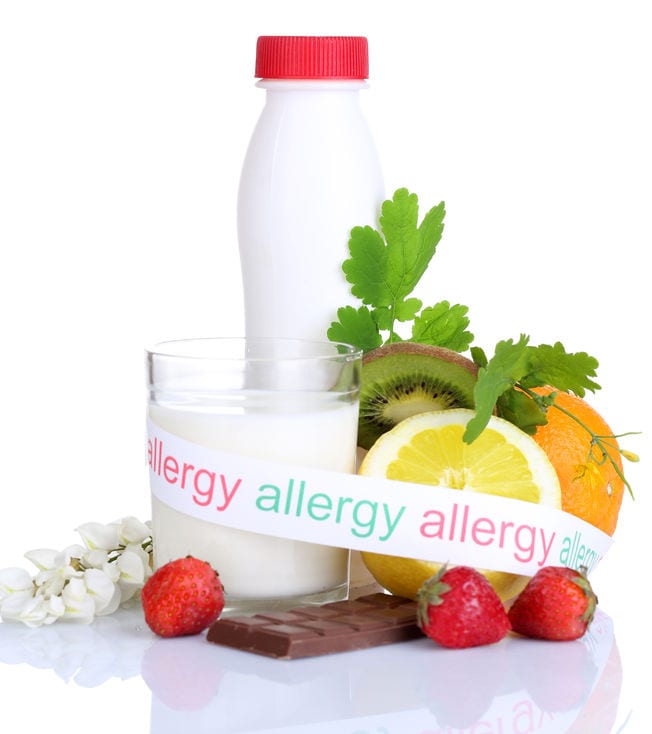When Food Goes Bad: Food Allergies and Intolerance

Unless you lead an astonishingly charmed life, chances are you’ve had a negative physical reaction to food at some point. Eating something that “disagrees” with your body can cause nausea, discomfort, hives on the skin, vomiting, and worse. However, repeated instances of these symptoms suggest that you might have a food intolerance, or in some cases, a true food allergy — the consequences of which can be far more dire. What’s the difference between the two?
Food intolerance has more to do with your digestive system and its failure to break down certain foods. Often, an absence or deficiency of specific digestive enzymes leads to food intolerance. For example, those who are lactose intolerant lack the necessary enzyme (lactase) to digest dairy. People with celiac disease are gluten intolerant (though celiac disease also involves the immune system). Some people have sensitivities to chemicals in foods (whether naturally occurring elements or food additives). Many are sensitive to sulfites, MSG, caffeine, sweeteners, preservatives and more.
Food allergies, on the other hand, catalyze an autoimmune reaction. Sometimes a body thinks it’s under attack by certain food proteins. White blood cells create antibodies (immunoglobin) to combat the perceived threat, then histamines and other mediating agents are released throughout the body, resulting in the symptoms associated with an allergic reaction. This can range from the mild to the very severe, and even fatal.
The most common allergy-inducing foods are fish, eggs, peanuts, nuts from trees, shellfish, milk, soy, and wheat.
Food Allergy, Mild Symptoms:
- hives, itchiness, or swelling of the skin
- nausea
- stomach pain
- congestion and sneezing
- vomiting and diarrhea
- dry cough
Food Allergy, Severe Symptoms:
- tightness of the throat/trouble swallowing
- wheezing
- swelling of the lips, tongue and throat
- chest pain
- weak pulse
- skin turning blue (from bad circulation)
- passing out
The most extreme allergic reaction is called anaphylaxis, which can be fatal. If a high-risk individual consumes a food, drink, or medicine which they are very allergic to, an epinephrine injection should be immediately administered, and they should be taken to the hospital immediately.
Treatment Plans
Milder cases of food allergies are often treated with anti-histamines and topical steroids If you suspect you might have food allergies, consult your primary care physician or visit CareSpot to discuss a proper course of action. Your CareSpot clinician can also refer you to an allergy specialist to help you pinpoint the severity of each of your allergens. This may involve skin tests, blood testing (RAST), or elimination diets – and depending on the results, a stronger medication may be prescribed to help manage symptoms over time.
If you have severe food allergies, develop an anaphylaxis emergency plan with your doctor or specialist, and always keep your epinephrine injector with you at all times.
Be sure to keep track of any adverse food reactions and report them to your healthcare professional. With any food allergy or intolerance, proper planning, testing, and treatment is key to living a long, healthy, enjoyable life. Once you’ve got the facts, you can build a diet full of delicious foods to supply your body the nourishment it needs while avoiding any adverse reactions.
